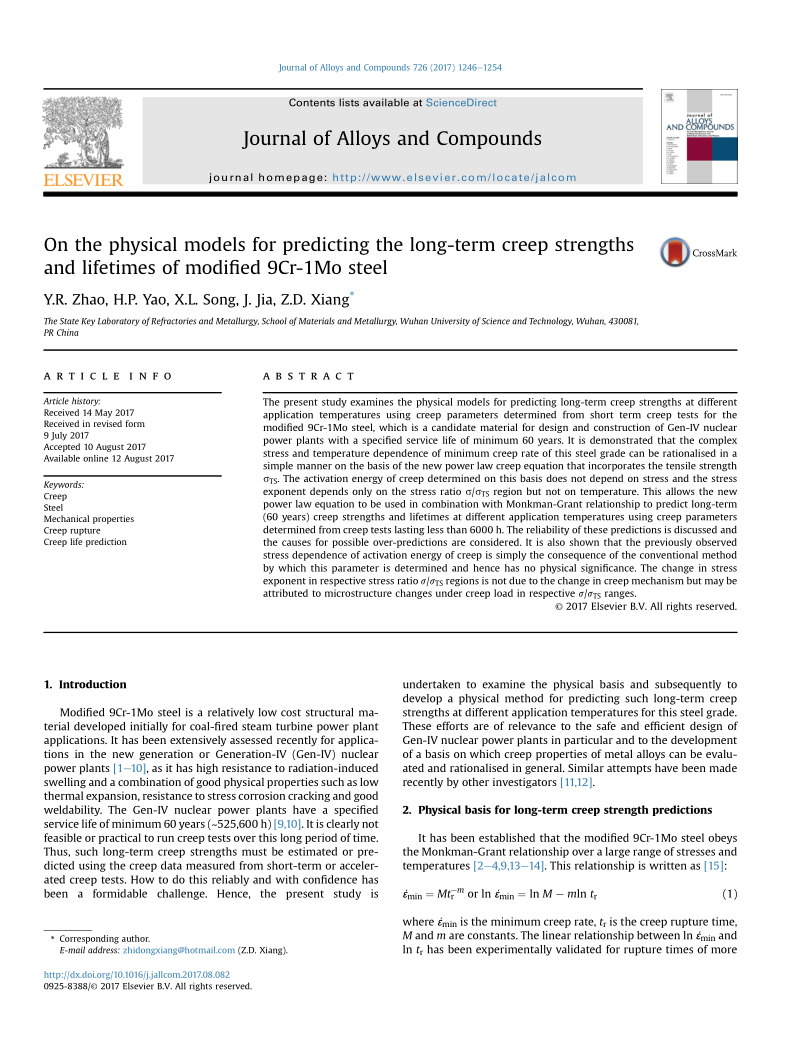The present study examines the physical models for predicting long-term creep strengths at different
application temperatures using creep parameters determined from short term creep tests for the
modified 9Cr-1Mo steel, which is a candidate material for design and construction of Gen-IV nuclear
power plants with a specified service life of minimum 60 years. It is demonstrated that the complex
stress and temperature dependence of minimum creep rate of this steel grade can be rationalised in a
simple manner on the basis of the new power law creep equation that incorporates the tensile strength
s TS . The activation energy of creep determined on this basis does not depend on stress and the stress
exponent depends only on the stress ratio s / s TS region but not on temperature. This allows the new
power law equation to be used in combination with Monkman-Grant relationship to predict long-term
(60 years) creep strengths and lifetimes at different application temperatures using creep parameters
determined from creep tests lasting less than 6000 h. The reliability of these predictions is discussed and
the causes for possible over-predictions are considered. It is also shown that the previously observed
stress dependence of activation energy of creep is simply the consequence of the conventional method
by which this parameter is determined and hence has no physical significance. The change in stress
exponent in respective stress ratio s / s TS regions is not due to the change in creep mechanism but may be
attributed to microstructure changes under creep load in respective s / s TS ranges.
